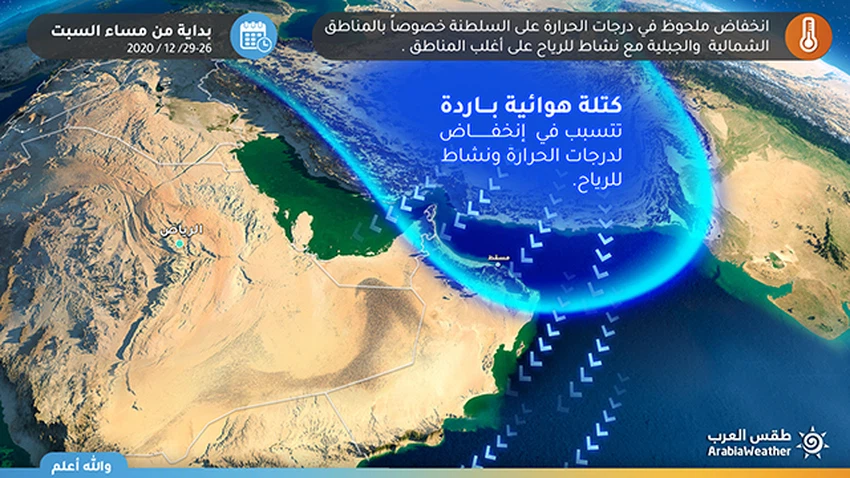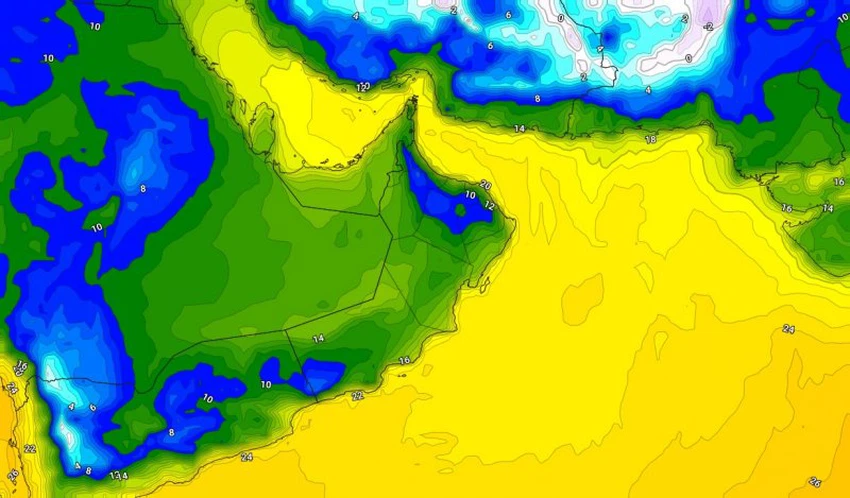The first cold waves this winter over the north of the Sultanate and low temperatures
This article was written originally in Arabic and is translated using a 3rd party automated service. ArabiaWeather is not responsible for any grammatical errors whatsoever.
Weather of Arabia - as the first cold waves, it is expected that the Sultanate will be affected in general by a cold northern air mass accompanied by active and sometimes strong winds working at a height of sea waves on floating coasts and a greater sense of land
As it is expected that the minimum temperatures on the coastal areas ranges between 18-13 degrees, while the highlands and mountainous areas will be below 10 degrees, with high chances of frost formation on high peaks.
![]() The following map shows the minimum temperatures during the hail effect from Saturday evening to Tuesday evening, and God knows best.
The following map shows the minimum temperatures during the hail effect from Saturday evening to Tuesday evening, and God knows best.
![]()
 The following map shows the minimum temperatures during the hail effect from Saturday evening to Tuesday evening, and God knows best.
The following map shows the minimum temperatures during the hail effect from Saturday evening to Tuesday evening, and God knows best.

This article was written originally in Arabic and is translated using a 3rd party automated service. ArabiaWeather is not responsible for any grammatical errors whatsoever.
Browse on the official website